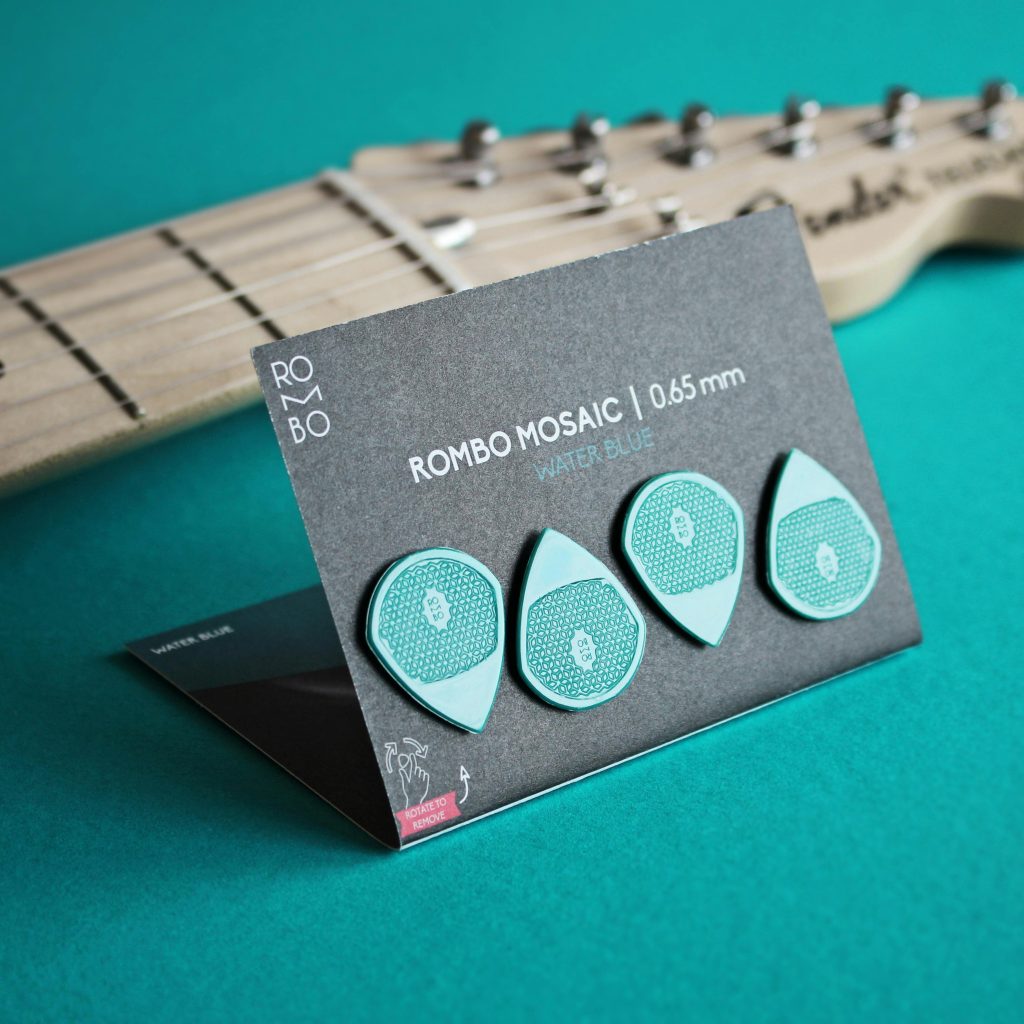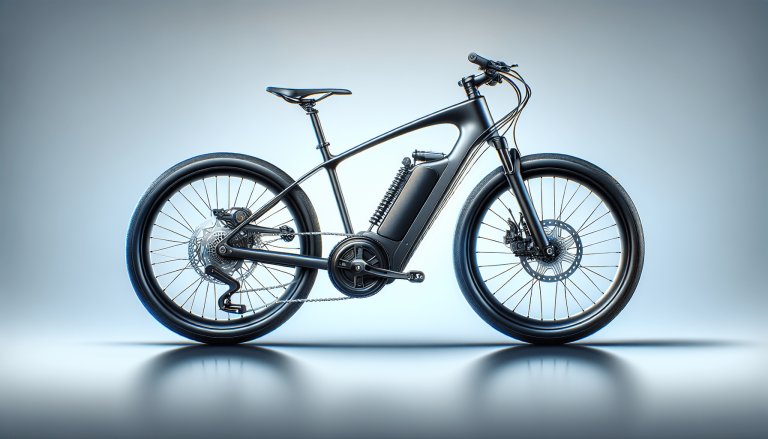Do Electric Bikes Need A Lot Of Maintenance?
If you’re considering investing in an electric bike, you may be wondering whether it will require a lot of maintenance. Well, fear not! electric bikes are designed to be low-maintenance, making them a convenient and hassle-free mode of transportation. Unlike traditional bicycles, electric bikes have fewer moving parts and require less frequent servicing. So you can spend less time tinkering with your bike and more time enjoying the open road.

Regular Cleaning and Lubrication
Keeping the Bike Clean
Keeping your electric bike clean is an essential part of its regular maintenance. Regularly cleaning your bike helps to remove dirt, dust, and debris that can accumulate on the frame, wheels, and drivetrain. It also allows you to inspect your bike for any signs of wear or damage. To clean your electric bike, you can use a mild soap and water solution or specific bike cleaning products. Gently scrub the frame, wheels, and other components using a soft brush or cloth, paying attention to hard-to-reach areas. Make sure to rinse off any soapy residue and allow the bike to dry completely before moving on to the next step of maintenance.
Lubricating the Chain
Lubricating the chain is another crucial aspect of maintaining your electric bike. A well-lubricated chain ensures smooth and efficient pedaling, reduces wear on the drivetrain, and prolongs the life of your bike. To lubricate the chain, start by cleaning it with a degreaser to remove any old lubricant and dirt. Once clean, apply a high-quality bicycle chain lubricant to each individual link, making sure to cover the entire length of the chain. Use a cloth to wipe off any excess lubricant, as too much can attract dirt and cause the chain to become gunky. It’s recommended to lubricate the chain after every 100 to 200 miles of riding or whenever you notice the chain becoming dry or noisy.
Cleaning the Drivetrain
The drivetrain of your electric bike, which includes the chainrings, cassette, and derailleur, is responsible for transferring power from your legs to the wheels. Keeping the drivetrain clean is essential to ensure smooth shifting and optimal performance. To clean the drivetrain, start by applying a degreaser to the chainrings, cassette, and derailleur. Use a brush or toothbrush to scrub away any dirt and grime. Rinse off the degreaser with water and allow the components to dry completely. After cleaning, you can apply lubricant to the chain and other moving parts of the drivetrain to ensure smooth operation. Regularly cleaning the drivetrain will help prevent premature wear and extend the lifespan of your electric bike.
Tire Maintenance
Checking and Adjusting Tire Pressure
Maintaining the proper tire pressure is crucial for both comfort and safety while riding your electric bike. Underinflated tires can lead to increased rolling resistance and decreased efficiency, while overinflated tires can result in a harsh and uncomfortable ride. To ensure you have the correct tire pressure, use a tire pressure gauge to measure the pressure in each tire. Consult the manufacturer’s guidelines or the sidewall of the tire for the recommended pressure range. If the pressure is too low, use a pump to add air until it reaches the desired level. On the other hand, if the pressure is too high, release some air using the valve stem. It’s important to regularly check and adjust tire pressure, especially before long rides, to ensure optimal performance and grip on the road.
Inspecting Tire Tread
The condition of your bike’s tires is vital for maintaining traction and preventing accidents. Regularly inspect the tread on your electric bike’s tires to ensure they are not excessively worn or damaged. Look for signs of uneven wear, bald spots, or cuts in the tread. If you notice any of these issues, it’s time to replace your tires. Riding on worn-out or damaged tires can compromise your safety and affect the handling of your electric bike. When selecting new tires, make sure to choose ones that are suitable for your riding style and the terrain you will be cycling on.
Repairing Punctures
Punctures are an inevitable part of cycling and can happen to even the most careful riders. Knowing how to repair a punctured tire is a valuable skill for any electric bike owner. To repair a puncture, start by removing the wheel from the bike frame. Next, deflate the tire completely and locate the puncture by listening for the escaping air or by submerging the tube in water to spot bubbles. Once you’ve identified the puncture, use a patch kit to repair it. This typically involves sanding the area around the puncture, applying adhesive, and attaching a patch. After the patch has been applied, inflate the tube slightly and check for any remaining leaks. Once the repair is complete, reassemble the wheel and check the tire pressure before riding again.
Battery Care
Charging and Discharging the Battery
Properly caring for your electric bike’s battery is essential for maintaining its performance and longevity. When charging the battery, it’s important to use the charger provided by the manufacturer and follow their recommended charging instructions. Avoid overcharging the battery, as this can lead to decreased battery life and potentially damage the cells. Similarly, avoid excessively discharging the battery, as this can also affect its overall lifespan. It’s generally recommended to keep the battery charged between 20% and 80% for optimal performance. If you won’t be using your electric bike for an extended period, it’s advisable to store the battery with a charge level between 30% and 60%.
Storing the Battery
If you need to store your electric bike for a prolonged period, proper battery storage is crucial. Before storing, make sure the battery is charged to the recommended level and disconnect it from the electric bike. Store the battery in a cool, dry place, away from direct sunlight and extreme temperatures. It’s also important to periodically check the battery during storage and recharge it if the charge level drops significantly. Refer to your electric bike’s user manual for specific instructions on how to store the battery correctly.
Replacing the Battery
Over time, the performance of your electric bike’s battery will naturally degrade. If you notice a significant decrease in battery capacity or range despite proper care and maintenance, it may be time to consider replacing the battery. Battery replacement can vary depending on the manufacturer and model of your electric bike. Some electric bikes have easily removable batteries that can be replaced by the user, while others may require professional assistance. If you’re unsure about replacing the battery yourself, it’s best to consult a bike shop or contact the manufacturer for guidance.
Brake Adjustment and Pad Replacement
Regular Brake Checks
Properly functioning brakes are vital for your safety while riding your electric bike. It’s essential to regularly check the condition and performance of your brake system. Start by visually inspecting the brake pads for wear. If the brake pads are thin or worn down to the metal, they should be replaced immediately. Additionally, check for any signs of damage or uneven wear on the brake rotors. Test the brakes by squeezing the brake levers to ensure they engage smoothly and provide sufficient stopping power. If you notice any issues with the brake performance, such as excessive lever travel or squeaking noises, it’s recommended to have them checked and adjusted by a professional bike mechanic.
Adjusting Brake Cable Tension
Over time, the brake cable tension on your electric bike can become loose or stretched, affecting the brake performance. If your brakes feel spongy or require excessive lever travel to engage, it may be necessary to adjust the brake cable tension. To do this, locate the barrel adjuster on the brake lever or brake caliper and turn it counterclockwise to tighten the cable or clockwise to loosen it. Make small adjustments and test the brakes after each adjustment to achieve the desired brake feel and responsiveness. If you’re unsure about adjusting the brake cable tension yourself, it’s best to seek professional assistance to ensure your brakes are properly adjusted.
Replacing Brake Pads
Brake pads are a wearable component of your electric bike’s braking system and will need to be replaced periodically. If your brake pads are worn down, damaged, or no longer provide sufficient stopping power, it’s time to replace them. Start by removing the wheel from the bike frame to gain access to the brake caliper. Locate the retaining pin or bolt that secures the brake pads in place. Remove the pin or bolt and slide out the old brake pads. Install the new brake pads and secure them with the retaining pin or bolt. Make sure the brake pads are properly aligned with the brake rotor and allow for sufficient clearance. Finally, test the brakes to ensure they engage smoothly and provide effective stopping power. If you’re unfamiliar with brake pad replacement, it’s recommended to have it done by a professional bike mechanic.

Gears and Shifter Maintenance
Adjusting Gear Shifting
Properly functioning gears and shifters are essential for a smooth and efficient ride on your electric bike. Over time, the shifting performance may become less precise or sluggish, requiring adjustments. If you’re experiencing difficulties with gear shifting, it may be necessary to adjust the gears and shifters. Start by shifting the bike into the highest and lowest gear and observe the chain’s position. If the chain is rubbing against the derailleur or not sitting on the gears properly, it’s time to make adjustments. Refer to your electric bike’s user manual or consult a professional bike mechanic for specific instructions on gear adjustment. Properly adjusted gears will ensure smooth and precise shifting, reducing unnecessary strain on the drivetrain components.
Cleaning the Shifter
The shifters on your electric bike allow you to change gears effortlessly while riding. To ensure optimal performance, it’s important to keep the shifters clean and free from dirt and debris. Start by wiping the shifters with a clean cloth to remove any surface dirt. For more thorough cleaning, you can use a mild soap and water solution or specific bike cleaning products. Gently scrub the shifters with a soft brush or cloth, paying attention to hard-to-reach areas. Rinse off any soapy residue and allow the shifters to dry completely. Once dry, apply a small amount of lubricant to the moving parts of the shifters to ensure smooth operation. Regularly cleaning and lubricating the shifters will help maintain their functionality and extend their lifespan.
Inspecting and Replacing Gear Cables
The gear cables on your electric bike connect the shifters to the derailleurs, enabling precise gear shifting. Over time, the cables may become stretched, rusty, or frayed, affecting the shifting performance. It’s important to regularly inspect the gear cables for any signs of wear or damage. Look for rust, kinks, or broken strands in the cables. If you notice any issues, it may be necessary to replace the gear cables. Gear cable replacement involves removing the old cables, installing new ones, and adjusting the tension for optimal shifting. If you’re not comfortable with replacing gear cables yourself, it’s best to seek professional assistance to ensure proper installation and adjustment.
Suspension and Fork Maintenance
Inspecting Suspension Components
If your electric bike is equipped with suspension components, such as front forks or rear shock absorbers, regular inspection is crucial for maintaining their functionality. Start by visually inspecting the suspension components for any signs of damage, such as cracks, dents, or oil leaks. Check the seals and bushings for wear or signs of deterioration. If you notice any issues or abnormalities, it’s best to have the suspension components inspected and serviced by a professional bike mechanic. They will be able to assess the extent of the damage and recommend any necessary repairs or replacements.
Cleaning and Lubricating Forks
Proper maintenance of the front forks on your electric bike is essential for ensuring smooth suspension performance and prolonging their lifespan. Cleaning the forks regularly helps to remove dirt, mud, and other debris that can accumulate and affect their operation. Start by wiping the exterior of the forks with a clean cloth to remove any surface dirt. For more thorough cleaning, you can use a mild soap and water solution or specific bike cleaning products. Gently scrub the forks with a soft brush or cloth, paying attention to hard-to-reach areas. Rinse off any soapy residue and allow the forks to dry completely. After cleaning, apply a small amount of suspension fork oil to the seals and moving parts of the forks, following the manufacturer’s recommendations. Regularly cleaning and lubricating the forks will help maintain their smooth operation and prevent premature wear.
Replacing Suspension Seals
The seals on your electric bike’s suspension components, such as the fork seals, play a crucial role in preventing dirt, dust, and moisture from entering and damaging the internal components. Over time, the seals may wear out, causing oil leaks or decreased suspension performance. If you notice oil leaking from the suspension components, it’s a sign that the seals need to be replaced. Replacing suspension seals typically involves disassembling the fork or rear shock, removing the old seals, and installing new ones. This can be a complex task and requires specialized knowledge and tools. It’s best to have suspension seal replacement done by a professional bike mechanic to ensure proper installation and functionality.

Electrical System Check
Inspecting Wiring Connections
The electrical system of your electric bike is responsible for powering the motor, controlling the display, and operating the lights. Regularly inspecting the wiring connections is essential to ensure proper functioning and prevent electrical issues. Start by visually inspecting the wiring connections for any signs of loose or damaged wires. Check that all connectors are securely plugged in and free from corrosion or dirt build-up. If you notice any issues, such as loose connections or damaged wires, it’s important to address them promptly. Secure any loose connections and clean any dirty connectors with contact cleaner or a mild solvent. If you’re unsure about inspecting or repairing the electrical system yourself, it’s best to consult a professional bike mechanic.
Testing Lights and Display
Properly functioning lights and display are essential for your safety and convenience while riding your electric bike. Before each ride, it’s important to test the lights and display to ensure they are working correctly. Turn on the lights and check that both the front and rear lights are illuminating properly. If you notice any issues, such as dim or non-functioning lights, it may be due to a loose connection or a faulty bulb. Check the connectors and replace any bulbs as necessary. Test the display by turning on the electric bike and checking that all the essential information, such as speed, battery level, and assist level, is displayed correctly. If any issues persist with the lights or display, it’s advisable to have them checked and repaired by a professional.
Checking the Controller and Motor
The controller and motor are critical components of your electric bike’s power system. Regularly inspecting and testing these components is important to ensure optimal performance and prevent any potential problems. Start by visually inspecting the controller and motor for any signs of damage, such as cracks or exposed wires. Check that all the connections are secure and free from dirt or corrosion. Turn on the electric bike and engage the motor to check that it runs smoothly without any unusual noises or vibrations. If you notice any issues with the controller or motor, it’s recommended to have them inspected and repaired by a professional bike mechanic or the manufacturer.
Frame and Component Inspection
Checking for Cracks or Damage
Regularly inspecting the frame and components of your electric bike is crucial for ensuring their structural integrity and your safety while riding. Start by visually inspecting the frame for any signs of cracks, dents, or other damage. Look closely at welds, joints, and stress points, as these areas are more prone to failure. Additionally, inspect other components, such as the handlebars, stem, and saddle, for any signs of damage or excessive wear. If you notice any issues, it’s important to have them inspected and repaired by a professional bike mechanic. Riding on a damaged frame or components can compromise the safety and performance of your electric bike.
Tightening Loose Bolts and Nuts
As you ride your electric bike, vibrations and regular use can cause bolts and nuts to loosen over time. Regularly checking and tightening these fasteners is essential to ensure the structural integrity of your electric bike. Start by visually inspecting all the bolts and nuts on your bike and checking for any signs of looseness or movement. Using the appropriate tools, tighten any loose bolts and nuts to the manufacturer’s recommended torque specifications. Pay particular attention to crucial areas such as the stem, handlebars, seatpost, and pedals. Regularly checking and tightening loose bolts and nuts will help prevent potential accidents and ensure a safe and comfortable ride.
Inspection of Handlebars, Stem, and Saddle
The handlebars, stem, and saddle are critical components that greatly affect your comfort and riding experience on your electric bike. Regularly inspecting these components is important to ensure they are secure and properly adjusted. Start by examining the handlebars and stem for any signs of movement, slippage, or damage. Make sure the stem is properly tightened and aligned with the front wheel. Next, check the saddle for any looseness or damage. Adjust the saddle height and angle to ensure optimal comfort and proper leg extension during pedaling. Regularly inspecting and adjusting the handlebars, stem, and saddle will help prevent discomfort and enhance your overall riding experience.

Regular Wheel Truing and Spoke Tension
Checking for Wheel Alignment
Properly aligned wheels are vital for your electric bike’s stability and performance. Over time, the wheels can become misaligned due to wear or impacts. Checking the wheel alignment regularly is essential to prevent issues such as uneven tire wear or compromised handling. Start by spinning each wheel and visually inspecting the gap between the brake pads and the rim. The gap should be consistent all the way around the wheel. If you notice any areas where the gap is excessively large or nonexistent, it may indicate a wheel alignment issue. To correct wheel alignment, you can use a spoke wrench to adjust the tension of the spokes. If you’re unsure about wheel alignment or spoke tension adjustment, it’s best to seek professional assistance to avoid potential damage to the wheels or spokes.
Adjusting Spoke Tension
The tension of the spokes on your electric bike’s wheels plays a crucial role in maintaining wheel strength and stability. Regularly checking and adjusting spoke tension is important to prevent issues such as loose or broken spokes. Start by squeezing pairs of adjacent spokes with your thumb and forefinger to check their tension. The spokes should feel evenly tensioned and produce a consistent sound when plucked. If you notice any loose or overly tight spokes, it’s necessary to adjust their tension. Using a spoke wrench, turn the spoke nipples clockwise to tighten the spoke or counterclockwise to loosen it. Make small adjustments and check the spoke tension after each adjustment. It’s important to achieve a balanced spoke tension on both sides of the wheel for optimal performance and longevity.
Repairing Damaged Rims
Damaged rims can greatly affect the performance and safety of your electric bike. Regularly inspecting the rims for signs of damage, such as dents, cracks, or excessive wear, is important. If you notice any issues, such as a significant wobble or sidewall damage, it may be necessary to repair or replace the rim. Minor rim repairs can sometimes be done by bending the rim back into shape or sanding down sharp edges. However, more severe damage or excessive wear may require rim replacement. It’s best to consult a professional bike mechanic to assess the extent of the damage and recommend the appropriate course of action. Riding on damaged rims can lead to compromised braking performance or wheel failure, posing a significant safety risk.
Professional Servicing and Maintenance
Getting Periodic Tune-Ups
While regular maintenance is crucial for keeping your electric bike in good condition, there are certain tasks that are best handled by a professional bike mechanic. Periodic tune-ups by a professional are highly recommended to ensure your electric bike is thoroughly inspected, adjusted, and serviced. During a tune-up, a bike mechanic will perform a comprehensive check of your bike’s components, including the frame, drivetrain, brakes, suspension, and electrical system. They will adjust any necessary settings, replace worn-out or damaged parts, and ensure your electric bike is in peak condition. Periodic tune-ups not only help prolong the life of your electric bike but also ensure your safety and optimal riding experience.
Servicing the Motor and Electronics
The motor and electronics of your electric bike are intricate components that require specialized knowledge and expertise to service and maintain. Regular servicing of these components is crucial for maintaining optimal power output and functionality. Servicing the motor may involve inspecting and cleaning the motor, ensuring proper alignment, and re-greasing bearings. Electronic components, such as the controller and display, may require software updates, firmware checks, or diagnostics to ensure they are functioning correctly. It’s best to have motor and electronic servicing done by a professional who is familiar with the specific components and programming of your electric bike. They will have the necessary tools and knowledge to address any issues and keep your electric bike running smoothly.
Expert Advice and Assistance
If you’re unsure about any aspect of maintaining or servicing your electric bike, it’s always best to seek expert advice and assistance. Electric bikes are complex machines with intricate components, and improper maintenance or repairs can lead to further damage or safety hazards. Consulting a professional bike mechanic or contacting the manufacturer for guidance can help ensure you’re taking the appropriate steps to maintain your electric bike. They can provide specific instructions, troubleshooting tips, or recommend qualified service centers in your area. By seeking expert advice and assistance, you can have peace of mind knowing that your electric bike is properly cared for and maintained.
In conclusion, electric bikes do require regular maintenance to ensure optimal performance, safety, and longevity. Regular cleaning and lubrication, tire maintenance, battery care, brake adjustment and pad replacement, gears and shifter maintenance, suspension and fork maintenance, electrical system check, frame and component inspection, regular wheel truing and spoke tension, and periodic professional servicing and maintenance are all essential aspects of maintaining an electric bike. By following these guidelines and seeking expert advice and assistance when needed, you can enjoy many miles of smooth and trouble-free riding on your electric bike.








